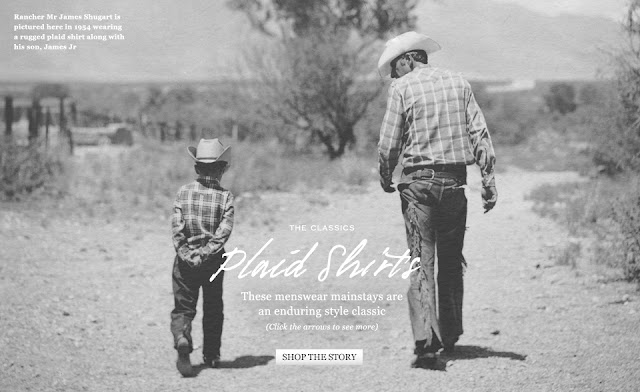Plaid, or check, has been part of the male wardrobe for centuries: examples of Scottish tartan date back to the 1500s, while some researchers maintain that checked textiles existed in Europe as early as 400BC. We're no historians, but we believe the reason plaid has endured in menswear for so long - and shows no sign of going anywhere - has something to do with the fact that it looks so good. From two-colour checks to multi-tonal plaids, there's something visually pleasing about the criss-crossing of straight lines, especially in contrast to the more fluid nature of clothing - in particular, shirts.
The plaid shirt became prominent in the early 20th century, when it was associated with the American outdoors: cowboys, hunters and lumberjacks all favoured check flannel shirts, with the latter group immortalised by the cult folklore figure Paul Bunyan. Made popular in 1914 by the advertiser Mr William Laughead to promote the Red River Lumber Company in Westwood, California, a giant statue of Paul Bunyan, wearing his distinctive red plaid shirt, in Bemidji, Minnesota, is now part of the US National Register of Historic Places.
After WWII, the plaid shirt started to make its transition into popular culture and into the casual wardrobe of city dwellers, who were no doubt keen to capitalise on its rugged and adventurous connotations. Movie stars and matinée idols including Messrs Guy Madison, James Dean and Rock Hudson were pictured wearing them, only furthering their popularity, and in 1963 The Beach Boys were photographed wearing identical plaid shirts on the cover of their album Surfer Girl, embedding the plaid shirt in laid-back surf culture. Towards the end of the 20th century plaid shirts became associated with the grunge movement, with bands such as Pearl Jam and Nirvana wearing them, and they still carry rock star connotations to this day.
Today, the plaid shirt is a wardrobe staple which can be worn in any number of ways, from casually with jeans and a leather jacket, to more formally with a blazer and knitted tie. Part of the plaid shirt's enduring appeal can be explained by the fact that it enables colour and pattern to be introduced to the male wardrobe, within the constraints of right angles and straight lines: plaid can be visually rich and even a bit flamboyant, without compromising on masculinity or breaking all the rules. After all, whenever we slip on a plaid shirt, part of us holds on to the belief that we could be about to fell a tree or shoot something for dinner.
WORDS & IMAGES BY MRPORTER.COM

.jpg)





No comments:
Post a Comment